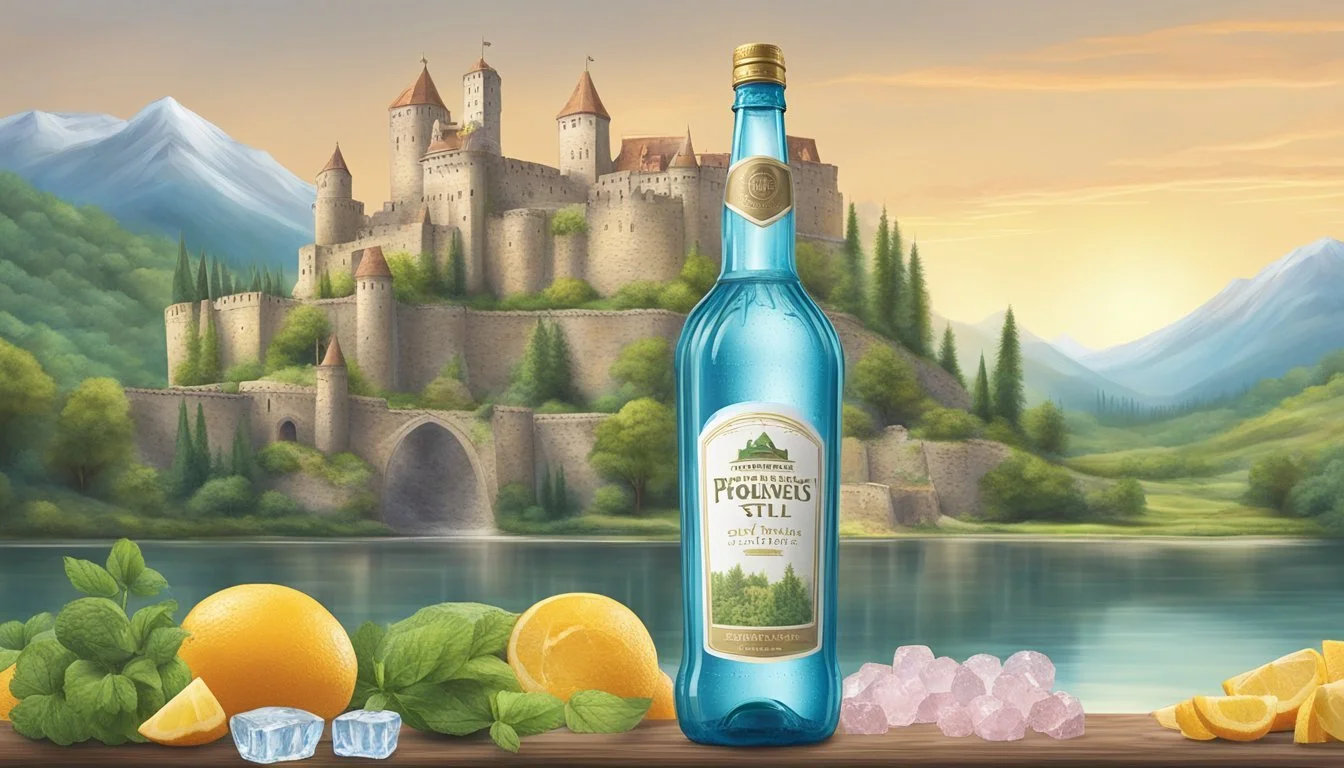Castle Rock vs. Whole Foods Italian Still Mineral Water
Better Bottled Water Comparison
Choosing the best bottled water often feels like finding a needle in a haystack, given the myriad options available. In the realm of Italian still mineral water, two brands stand out: Castle Rock and Whole Foods Italian Still Mineral Water. These brands promise not only hydration but also the unique flavor profiles that reflect Italy's rich mineral springs.
Castle Rock, known for its pristine sources and rigorous quality controls, offers a water experience that is both refreshing and subtly complex. Whole Foods Italian Still Mineral Water, on the other hand, prides itself on organic sourcing and sustainable practices, ensuring every sip is pure and ethically produced. Ultimately, your preference might hinge on the distinct tasting notes and brand values each water brings to the table.
Both Castle Rock and Whole Foods Italian Still Mineral Water embody the essence of Italian luxury in bottled water form. Readers can expect a deep dive into the origins, taste profiles, and production methods of these waters, offering a clear perspective on which might be the better choice for their needs.
The Essence of Bottled Water
Bottled water has become a crucial commodity in modern life, prized for its purity and convenience. Its diverse types, ranging from simple spring water to richly mineralized versions, serve various health and wellness needs.
Understanding Bottled Water
Bottled water is more than just water in a container. It comes in different types, each with distinct characteristics. Spring water is collected from natural springs and typically contains natural minerals. Mineral water has a higher mineral content and must be sourced from protected underground reservoirs. These waters are not altered and are often touted for their health benefits due to the minerals they contain, such as calcium and magnesium.
Purified water has undergone processes such as distillation or reverse osmosis to remove impurities. It lacks the natural mineral content of spring or mineral water but is prized for its purity. Consumers often choose specific types of bottled water based on their personal health needs and taste preferences.
History and Origin of Mineral Water
The history of mineral water dates back to ancient times. It was first bottled in the mid-16th century, making it accessible beyond the proximity of natural springs. Initially, it was considered a luxury, consumed by the wealthy at spas and believed to have healing properties.
In Italy, mineral water became particularly popular. Italian brands like Smeraldina are celebrated for their meticulous distillation and filtration processes. The cultural significance of mineral water in Italy is profound; it is commonly served at meals and used in cooking. The industry's growth has seen bottled mineral water become an integral part of modern hydration practices.
Health Implications of Hydration
Maintaining proper hydration is essential for overall health. Drinking water regulates body temperature, aids in digestion, and supports bodily functions. Mineral water can provide additional health benefits due to its composition. Minerals such as potassium and magnesium are vital for muscle function and cardiovascular health.
For athletes and active individuals, choosing bottled water with higher mineral content can be particularly beneficial. Hydration impacts energy levels, mental clarity, and physical performance. Understanding the specific benefits of different types of bottled water helps consumers make informed choices that align with their health and well-being.
By considering the type, origin, and health implications of bottled water, individuals can better appreciate its value in daily life.
Brand Analysis: Castle Rock vs. Whole Foods Italian Still Mineral Water
Castle Rock and Whole Foods Italian Still Mineral Water are two popular options for bottled water enthusiasts. Each brand has distinct sources, types of water, and taste profiles that set them apart.
Company Backgrounds and Source
Castle Rock sources its spring water from the pristine areas of the Mt. Shasta region in California. The water is known for being naturally filtered through layers of volcanic rock, giving it a pure and crisp taste. Castle Rock's commitment to environmental sustainability is reflected in their eco-friendly packaging and responsible water sourcing practices.
Whole Foods Italian Still Mineral Water is bottled at the La Galvanina Spa Source in Rimini, Italy. This water is sourced from ancient springs and is distributed by Whole Foods Market. The La Galvanina source has a long history of providing high-quality mineral water, with a focus on maintaining the water's natural properties.
Natural Mineral Water vs. Other Types
Castle Rock offers natural spring water, which is collected directly from the source without altering its composition. This type of water is known for its natural purity and balanced mineral content.
Whole Foods Italian Still Mineral Water, sourced from La Galvanina, is classified as natural mineral water. Unlike other types of bottled water, natural mineral water like this one contains specific minerals and trace elements beneficial for health. The mineral content is naturally occurring and reflects the geological properties of the source.
Taste Profiles and Mineral Composition
Castle Rock is praised for its clean and crisp flavor, reminiscent of a refreshing hike through mountain terrain. The water has a balanced mineral composition, resulting in a smooth aftertaste without any prominent flavors. This makes it a favorite among those who prefer a subtle and neutral taste.
Whole Foods Italian Still Mineral Water, on the other hand, has a distinctive flavor profile attributed to its mineral composition. The water contains various minerals such as calcium and magnesium, providing a slightly sweet and smooth taste. The balanced pH level ensures that it is neither too acidic nor too alkaline, making it a pleasant choice for daily consumption.
Quality and Purity Standards
Both Castle Rock and Whole Foods Italian Still Mineral Water are subjected to rigorous quality and purity standards. Key points include their filtration and purification methods, the health benefits and mineral content of the water, and their compliance with regulatory standards and environmental impact.
Filtration and Purification Methods
Castle Rock uses multiple purification methods, including reverse osmosis and ultraviolet light. These processes remove contaminants and ensure clean water. Castle Rock's commitment to purity also includes natural filtration through ancient volcanic rock, which further enhances water quality.
Whole Foods Italian Still Mineral Water, sourced from natural springs in Italy, undergoes primary filtration to remove impurities. Additionally, the water is naturally filtered through bedrock, maintaining its natural mineral content. This method preserves the water’s mineral-rich profile.
Overall, both brands prioritize sophisticated purification techniques, yet Castle Rock employs more advanced technological methods compared to Whole Foods' natural filtration process.
Health Benefits and Mineral Content
Castle Rock is rich in essential minerals like calcium, magnesium, and potassium, which contribute to overall health. These minerals help support bone health, muscle function, and electrolyte balance. Consumers may find Castle Rock particularly beneficial due to its balanced mineral profile.
Whole Foods Italian Still Mineral Water contains a unique combination of minerals derived from its natural source. It is especially noted for its high content of sulfur and bicarbonate. These minerals aid in digestion and maintain pH balance in the body. The mineral concentration in Whole Foods' water may offer specific health benefits for those seeking natural mineral supplementation.
Each brand provides distinct benefits based on their mineral compositions, giving consumers options depending on their health needs.
Regulatory Compliance and Environmental Impact
Castle Rock adheres to stringent U.S. water quality standards set by the Environmental Protection Agency (EPA) and the Food and Drug Administration (FDA). Their production processes are regularly monitored for compliance. Moreover, Castle Rock incorporates eco-friendly practices, such as using recycled materials for packaging.
Whole Foods Italian Still Mineral Water complies with European Union regulations, known for their strict water quality standards. Additionally, Whole Foods is committed to sustainability, with efforts in place to reduce carbon footprints and promote recycling.
Regulatory adherence and environmental responsibility play significant roles in ensuring the safety and sustainability of both bottled water brands.
Sustainability and Future Trends
Castle Rock and Whole Foods Italian Still Mineral Water are increasingly aligning their practices with environmental sustainability. This shift is driven by growing consumer demand for eco-friendly products and a commitment to reducing their ecological footprint.
Consumer Trends Towards Eco-Friendly Practices
Consumers are becoming more environmentally conscious, driving demand for sustainable bottled water options. Castle Rock, for example, highlights its use of recyclable packaging and sustainable sourcing methods. Its dedication to reducing plastic waste appeals to eco-conscious buyers.
Whole Foods Italian Still Mineral Water also emphasizes sustainability. The brand often uses glass bottles, which are less harmful to the environment compared to plastic. Additionally, supporting local bottling operations reduces carbon emissions associated with transportation.
Both brands are responding to the market shift towards greener products by implementing practices that minimize their environmental impact. These efforts are crucial for meeting the needs of a growing population that prioritizes sustainability in their purchasing decisions.




